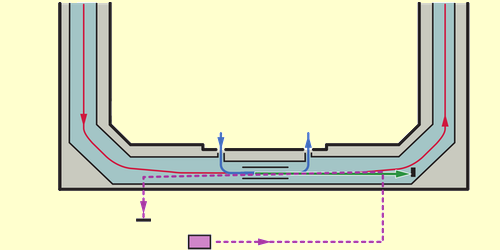Electron-Ion Collisions Measured in a Cryogenic Facility
In interstellar clouds, free electrons bounce like pinballs off molecular ions, changing the ions’ rotational states. Radio astronomers use emissions from these changed states to probe the properties of distant galaxies. Although scientists have predicted the rates at which these electron-ion collisions occur in different settings, those rates remained unconfirmed until now. Now, Ábel Kálosi from the Max Planck Institute for Nuclear Physics, Germany, and colleagues have demonstrated a method that experimentally validates the predictions [1]. Having a tool to study the collision rates of molecular ions with electrons in different settings could help astronomers better understand data from radio observatories, such as the Atacama Large Millimeter/submillimeter Array in Chile.
For their experiments, Kálosi and his colleagues used a cryogenic storage ring—a heavy-ion storage ring that operates at a few kelvins. Ions—in this case methylidyne cations—move around such a ring like cars on a racetrack. After setting up the molecular-ion beam, the team turned on an electron beam that they merged with the ion beam. By comparing the rotational energies of the ions before and after these two beams interacted, the researchers were able to measure the rate at which the electron collisions changed the ions’ rotational states. Their measured values matched predictions.
Kálosi and colleagues now plan to develop more tools for studying the collisions of electrons and molecules. They also intend to use their techniques to probe the quantum properties of molecules and to study the role that electron-ion collisions play in the formation of stars and planets.
–Sarah Wells
Sarah Wells is an independent science journalist based outside of Washington, DC.
References
- Á. Kálosi et al., “Laser probing of the rotational cooling of molecular ions by electron collisions,” Phys. Rev. Lett. 128, 183402 (2022).




